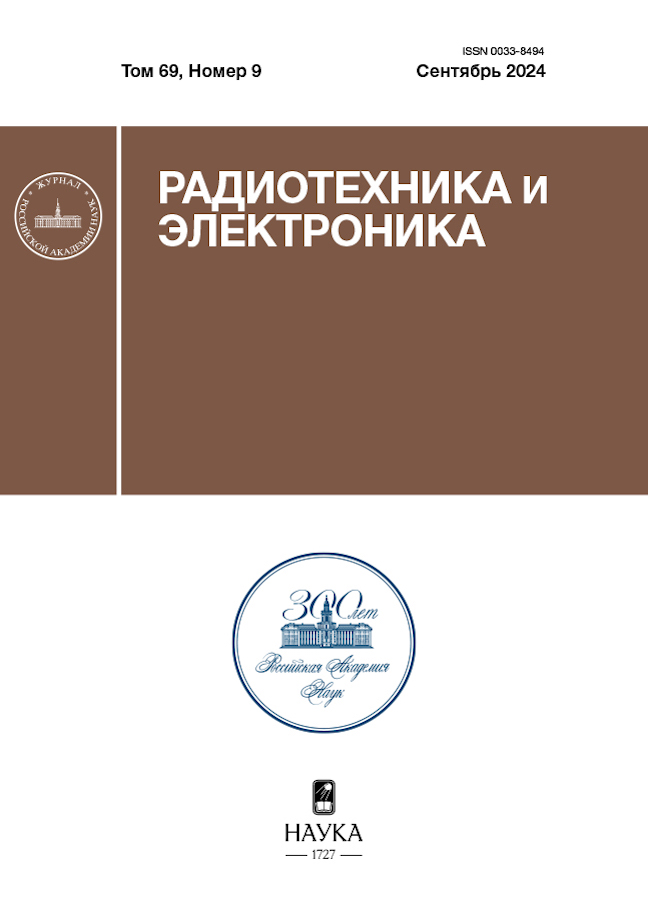Optimization of the waveguide structure of a plasma reactor supported by powerful microwave radiation of a gyrotron at a frequency of 24 GHz
- Authors: Mansfeld D.A.1, Chekmarev N.V.1, Sintsov S.V.1, Vodopyanov A.V.1
-
Affiliations:
- Federal Research Center A.V. Gaponov-Grekhov Institute of Applied Physics RAS
- Issue: Vol 69, No 9 (2024)
- Pages: 849-854
- Section: ELECTRODYNAMICS AND RADIO WAVE PROPAGATION
- URL: https://jdigitaldiagnostics.com/0033-8494/article/view/683525
- DOI: https://doi.org/10.31857/S0033849424090033
- EDN: https://elibrary.ru/HSOKMP
- ID: 683525
Cite item
Abstract
Numerical simulation of electromagnetic fields in a waveguide plasma torch has been carried out, in which microwave plasma heating is carried out by continuous radiation from a technological gyrotron with a frequency of 24 GHz and a power of up to 5 kW. It is shown that a decrease in the output diameter of the plasma torch makes it possible to more than double the amplitude of the electric field, but when the diameter decreases to 8 mm, the reflection coefficient increases significantly, which leads to reflected radiation entering the gyrotron. It is shown that taking into account the collision frequency corresponding to the real parameters of the atmospheric pressure discharge leads to a decrease in the reflection coefficient by more than 10. It has been experimentally confirmed that with a decrease in the output diameter of the plasma torch, the range of discharge maintenance parameters significantly expands, and the absorption coefficient exceeds 80%.
Full Text
About the authors
D. A. Mansfeld
Federal Research Center A.V. Gaponov-Grekhov Institute of Applied Physics RAS
Author for correspondence.
Email: mda1981@ipfran.ru
Russian Federation, 46 Ul’yanov Str., Nizhny Novgorod, 603950
N. V. Chekmarev
Federal Research Center A.V. Gaponov-Grekhov Institute of Applied Physics RAS
Email: mda1981@ipfran.ru
Russian Federation, 46 Ul’yanov Str., Nizhny Novgorod, 603950
S. V. Sintsov
Federal Research Center A.V. Gaponov-Grekhov Institute of Applied Physics RAS
Email: mda1981@ipfran.ru
Russian Federation, 46 Ul’yanov Str., Nizhny Novgorod, 603950
A. V. Vodopyanov
Federal Research Center A.V. Gaponov-Grekhov Institute of Applied Physics RAS
Email: mda1981@ipfran.ru
Russian Federation, 46 Ul’yanov Str., Nizhny Novgorod, 603950
References
- Sabchevski S., Glyavin, M., Mitsudo S. et al. // J. Infrared, Millimeter, Terahertz Waves. 2021. V. 42. P. 715. https://doi.org/10.1007/s10762-021-00804-8
- Egorov S.V., Eremeev A.G., Kholoptsev V.V. et al. // Rev. Sci. Instruments. 2022. V. 93. № 6. https://doi.org/10.1063/5.0093341
- Bogdashov A.A., Fokin A.P., Glyavin M.Yu. et al. // J. Infrared, Millimeter, Terahertz Waves. 2020. V. 41. P. 164. https://doi.org/10.1007/s10762-019-00655-4
- Мансфельд Д.А., Водопьянов А.В., Синцов С.В. и др. // Письма в ЖТФ. 2023. Т. 49. № 1. C. 39. https://doi.org/ 10.21883/PJTF.2023.01.54057.19384
- Мансфельд Д.А. // Тез. докл. конф. “Физика низкотемпературной плазмы”. Казань, 5–9.06.2023. Казань: Изд-во Казан. ун-та, 2023. С. 56.
- Raizer Yu.P. Gas Discharge Physics. New York: Springer, 1991.
- Yukikazu Itikawa // J. Phys. Chem. Ref. Data. 2002. V. 31. P. 749. https://doi.org/10.1063/1.1481879
Supplementary files


















